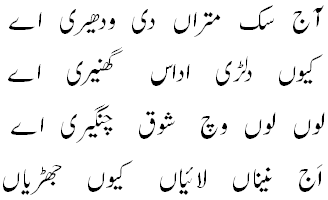Sayyid Naquib al-Attas
The concept couched in the term din, which is generally understood to mean religion, is not the same as the concept religion as interpreted and understood throughout Western religious history. When we speak of Islam and refer to it in English as a ‘religion’, we mean and understand by it the din, in which all the basic connotations inherent in the term din are conceived as gathered into a single unity of coherent meaning as reflected in the Holy Qur’an and in the Arabic language to which it belongs.
.
The word din derived from the Arabic root 'DYN' has many primary significations which although seemingly contrary to one another are yet all conceptually interconnected, so that the ultimate meaning derived from them all presents itself as a clarified unity of the whole. By ‘the whole’ I mean that which is described as the Religion of Islam, which contains within itself all the relevant possibilities of meaning inherent in the concept of din.
Since we are dealing with an Islamic concept which is translated into a living reality intimately and profoundly lived in human experience, the apparent contrariness in its basic meanings is indeed not due to vagueness; it is, rather, due to the contrariness inherent in human nature itself, which they faithfully reflect. And their power to reflect human nature faithfully is itself clear demonstration of their lucidity and veracity and authenticity in conveying truth.
.
The primary signification of the term din can be reduced to four: (1) indebtedness; (2) submissiveness; (3) judicious power; (4) natural inclination or tendency.
In what presently follows, I shall attempt to explain them briefly and place them in their relevant contexts, drawing forth the coherent ultimate meaning intended, which denotes the faith, beliefs and practices and teachings adhered to by the Muslims individually and collectively as a Community and manifesting itself altogether as an objective whole as the Religion called Islam.
.
The verb dana which derives from din conveys the meaning of being indebted, including various other meanings connected with debts, some of them contraries. In the state in which one finds oneself being in debt – that is to say, a da’in – it follows that one subjects oneself, in the sense of yielding and obeying, to law and ordinances governing debts, and also, in a way, to the creditor, who is likewise designated as a da’in. There is also conveyed in the situation described the fact that one in debt is under obligation, or dayn. Being in debt and under obligation naturally involves judgement: daynunah, and conviction: idanah, as the case may be. All the above significations including their contraries inherent in dana are practicable possibilities only in organized societies involved in commercial life in towns and cities, denoted by mudun or mada’in. A town or city, a madinah, has a judge, ruler, or governor – a dayyan. Thus already here, in the various applications of the verb dana alone, we see rising before our mind’s eye a picture of civilized life; of societal life of law and order and justice and authority. It is, conceptually at least, connected intimately with another verb maddana which means: to build or to found cities: to civilize, to refine and to humanize; from which is derived another term: tamaddun, meaning civilization and refinement in social culture.
Thus we derive from the primary signification of being in a state of debt other correlated significations, such as: to abase oneself, to serve (a master), to become enslaved; and from another such signification of judge, ruler, and governor is derived meanings which denote the becoming mighty, powerful and strong; a master, one elevated in rank, and glorious; and yet further, the meanings: judgement, requital or reckoning (at some appointed time).
Now the very notion of law and order and justice and authority and social cultural refinement inherent in all these significations derived from the concept din must surely presuppose the existence of a mode or manner of acting consistent with what is reflected in the law, the order, the justice, the authority and social cultural refinement – a mode or manner of acting, or a state of being considered as normal in relation to them; so that this state of being is a state that is customary or habitual. From here, then, we can see the logic behind the derivation of the other primary signification of the concept dinas custom, habit, disposition, or natural tendency.
At this juncture it becomes increasingly clear that the concept of din in its most basic form indeed reflects in true testimony the natural tendency of man to form societies and obey laws and seek just government. The idea of a kingdom, a cosmopolis, inherent in the concept din that rises before our vision is most important in helping us attain a more profound understanding of it, and needs to be reiterated here, for we shall have recourse to it again when we deal with the religious and spiritual aspects of man’s existential experience.“
.
 -
-






